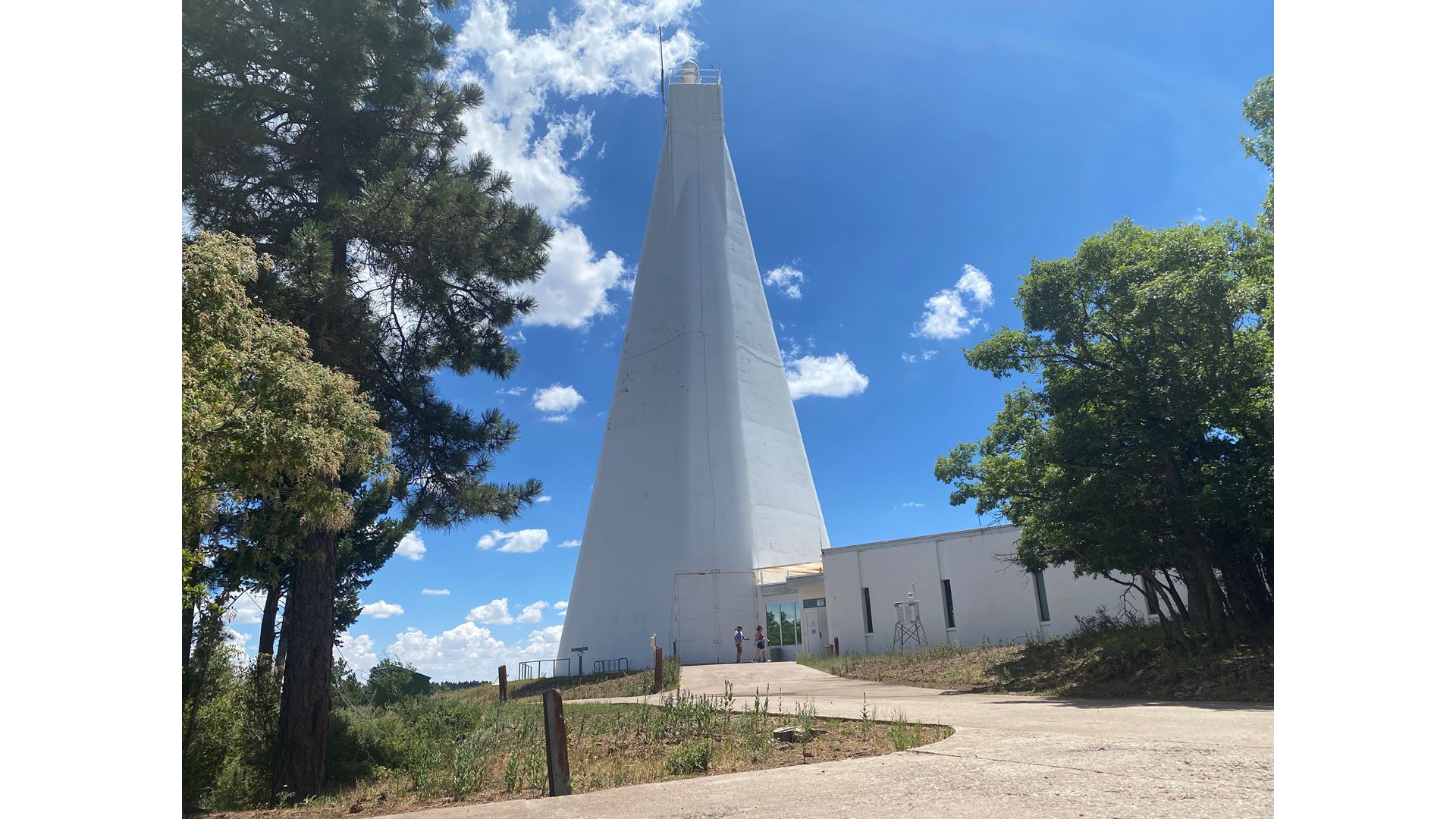From solar tornadoes to coronal mass ejections, New Mexico State University is continuing the legacy of solar research at the Richard B. Dunn Solar Telescope, thanks to the proactive efforts of the NMSU Department of Astronomy.
Built in 1969 for U.S. Air Force, the Dunn Solar Telescope’s ownership was transferred in 1975 to the National Solar Observatory (NSO), a part of the National Science Foundation. From 1975 to 2017, the telescope at the Sunspot Solar Observatory was the premier solar research tool for the NSF until the construction of a more powerful telescope, the Daniel K. Inouye Solar Telescope (DKIST), atop Haleakala, Maui, Hawaii.
Astronomy professors advocated continuing the telescope’s availability for researchers. They approached the NSF for support to form a consortium to retain the substantial value of the telescope as both as a scientific tool and as a training ground for the next generation of solar researchers. An NSF award funded the transition to the NMSU-led Sunspot Solar Observatory Consortium.
“It’s kind of a homegrown institute that has collaborations throughout the world,” said Juie Shetye, NMSU assistant astronomy professor who is leading research teams at the Sunspot Solar Observatory. “We have teams from UK and India and different parts in Europe. We also do collaborations with NASA-led bodies.”
Shetye and her students study different dynamics on the sun that give rise to events like solar flares. They have a campaign called Flare Patrol where they search for huge events that can generate the energy equivalent of a million nuclear bombs. Another campaign is Filament Observation. These appear as dark structures like arches, but the size of Jupiter, on the face of the sun. Researchers study the evolution of these events before they cause a massive eruption.
“Every day we zoom into a section of the sun,” Shetye said. “The sun is huge, we can fit in a million Earths inside the sun, so we zoom into a small area, say the size of Texas or Las Cruces, and we look into details of what's happening on the sun.”
Oana Vesa is an NMSU astronomy Ph.D. candidate and one of Shetye’s students researching the impact of solar tornados both in the solar atmosphere and ultimately on Earth. Previous studies have centered on data from Europe but Vesa’s research uses data from the Dunn Solar Telescope at Sunspot Solar Observatory.
“The solar atmosphere easily generates storms similar to tornadoes or hurricanes on Earth,” Vesa said. “Rooted to the surface of the sun by strong magnetic field concentrations, the twisting of the magnetic field and plasma gives them their swirling appearance. While similar to Earth-based tornadoes, solar tornadoes are much larger, much faster and much more powerful.”
“It’s a relatively new field,” Shetye said. “Oana is looking at data from multiple data sets, multiple viewing angles to see if we can better understand these phenomena. This is the first study that has a statistically significant number of events. Studies in the past have had maybe 10 or 12 events. Oana has 86 events.”
Solar tornadoes can cause what’s called a prominence, an arch of mass that extends above the solar surface. If the magnetic field lines within the prominence become tangled, they can build up excess energy, which like a stretched rubber band, can slingshot plasma beyond the sun’s corona. A coronal mass ejection is different than a solar flare. It’s more like a cannonball, an immense cloud of magnetized particles hurled into space.
Coronal mass ejections can cause the kind of space weather events that impact the technology we rely on every day. Smartphones, GPS and other devices depend on communication satellites, which can be disrupted by space weather between the Earth and the sun.
With the help of the Dunn Solar Telescope and Sunspot Solar Observatory, researchers at NMSU will continue studying events on the sun to better understand and potentially predict space weather.
-30-
CUTLINE: New Mexico State University is continuing the legacy of solar research at the Richard B. Dunn Solar Telescope, thanks to the proactive efforts of the NMSU Department of Astronomy. (NMSU photo by Chloe Dunlap)

